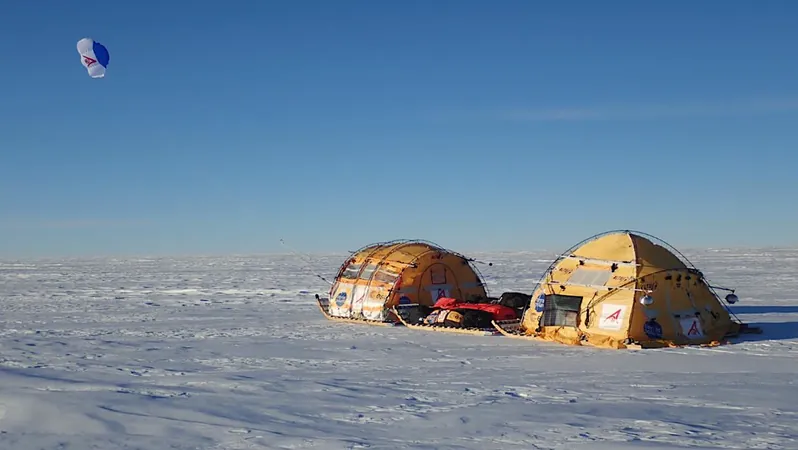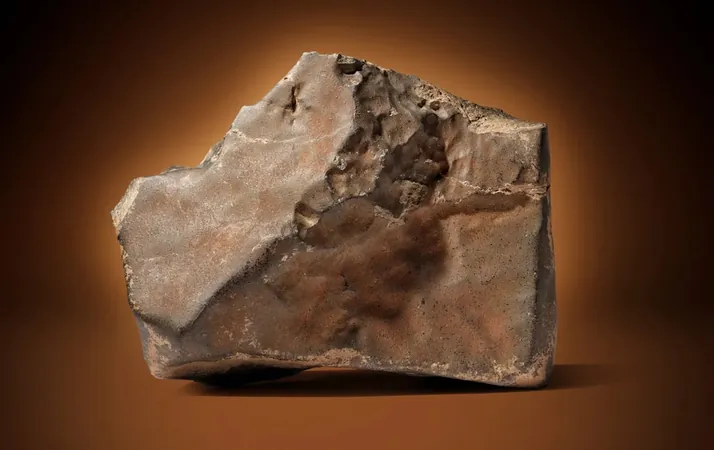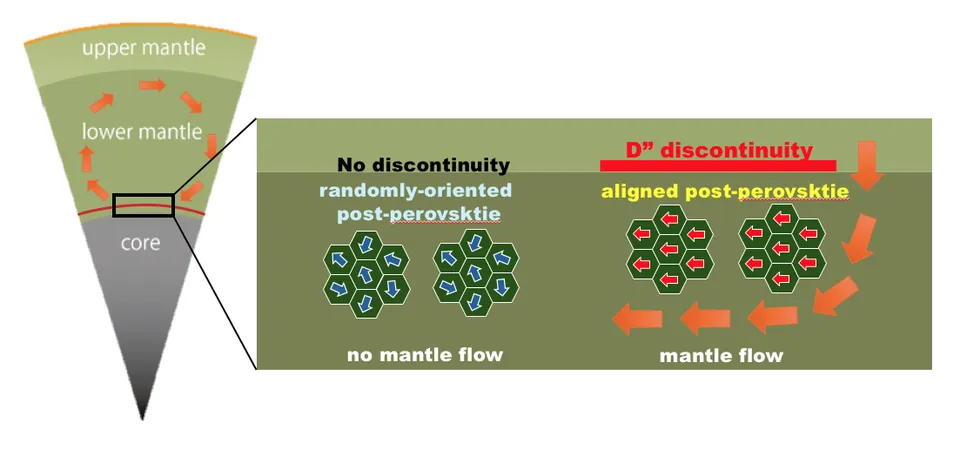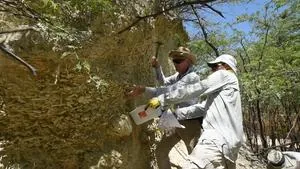
Unveiling the Secrets of Microbial Life in Antarctica's Harshest Ecosystem: The Antarctic Plateau
2025-01-25
Author: Wei Ling
Introduction
In an exciting development for astrobiology, a groundbreaking international research team led by the Centro de Astrobiologia (CAB), part of Spain's National Institute of Aerospace Technology (INTA) and the Universidad Autónoma de Madrid, has made remarkable strides in exploring microbial life in one of the most extreme environments on Earth—the Antarctic Plateau.
Investigation with WindSled
Using a cutting-edge innovation called the WindSled, scientists were able to investigate microbial life embedded in the snow and ice of this frigid landscape. The WindSled is a mobile, emission-free scientific base specifically designed to access remote locations in Antarctica, enabling the team to explore depths of up to 4 meters below the surface. Within this icy terrain, researchers were able to analyze bacterial communities established over the past 40 to 50 years.
The Antarctic Plateau and Its Environment
The Antarctic Plateau, towering more than 3,000 meters above sea level, holds the record for the coldest temperature ever recorded on Earth, at a staggering -89.2°C. This arid zone, characterized by its limited precipitation and harsh UV radiation in the summer, serves as a natural laboratory for understanding the limits of life on our planet. "This environment might be the best earthly analog for studying the potential for life on other celestial bodies, including Jupiter’s icy moon Europa and Saturn’s moon Enceladus, as well as Martian terrain," said Professor Victor Parro from the CAB.
Challenges in Research
However, the frigid conditions and remote location of the Antarctic Plateau pose significant challenges for researchers. Traditionally, accessing this pristine environment has been complex and costly, often relying on gas-guzzling vehicles that leave a heavy carbon footprint. The WindSled, designed to eliminate emissions, carries up to five crew members and 500 kg of scientific equipment. Spanish explorer Ramón Larramendi, who developed the WindSled, emphasizes its robustness and versatility, making it an ideal vehicle for scientific endeavors in the harshest settings.
The 2018-2019 Expedition
During the 2018-2019 expedition, the WindSled traveled over 2,500 km, conducting vital in situ research. The team used advanced technologies—including portable immunosensors—to detect microorganisms and sampled aerosols and biological materials from the frigid air. This expedition marked the first time scientists gathered microbial samples from the atmosphere of the Antarctic Plateau, achieving significant insights into the microorganisms present in this icy ecosystem.
Focal Points of Research
Microbial biogeography emerged as a focal point of the research, revealing how factors such as prevailing winds and snow/ice transport influence the distribution of life. The study identified distinct bacteria, including newly discovered cyanobacterial species, highlighting the expedition's significance in enhancing our understanding of life's limits and resilience in extreme environments.
The Importance of Sustainable Research
"This work underscores the critical need for sustainable scientific platforms to study places which remain largely unmonitored, yet are crucial for understanding climate change and its future impacts," stated Professor Mayewski from the University of Maine, one of the study's co-authors.
Analogous Conditions on Other Celestial Bodies
Moreover, the Antarctic Plateau's combination of extreme cold and lack of moisture parallels conditions not just on other icy bodies in our solar system, but also on Mars. Scientists think that similar processes could allow for minimal biological activity in those alien landscapes.
Conclusion
Ultimately, the research conducted via the WindSled contributes significantly to our understanding of not only life on Earth but also the exploration of alien worlds. The journey into the icy depths of Antarctica stands as a testament to human ingenuity and the relentless pursuit of knowledge. As researchers unveil the mysteries of this desolate but vital ecosystem, they pave the way for future habitation and survival studies on planets beyond our own.
With the rapidly changing climate, understanding these extreme life forms will be pivotal in predicting how life may adapt—or struggle—in environments across the cosmos. Could these microscopic survivors offer clues to life beyond Earth? The answer may lie frozen in the enigmatic depths of the Antarctic Plateau.



 Brasil (PT)
Brasil (PT)
 Canada (EN)
Canada (EN)
 Chile (ES)
Chile (ES)
 Česko (CS)
Česko (CS)
 대한민국 (KO)
대한민국 (KO)
 España (ES)
España (ES)
 France (FR)
France (FR)
 Hong Kong (EN)
Hong Kong (EN)
 Italia (IT)
Italia (IT)
 日本 (JA)
日本 (JA)
 Magyarország (HU)
Magyarország (HU)
 Norge (NO)
Norge (NO)
 Polska (PL)
Polska (PL)
 Schweiz (DE)
Schweiz (DE)
 Singapore (EN)
Singapore (EN)
 Sverige (SV)
Sverige (SV)
 Suomi (FI)
Suomi (FI)
 Türkiye (TR)
Türkiye (TR)
 الإمارات العربية المتحدة (AR)
الإمارات العربية المتحدة (AR)